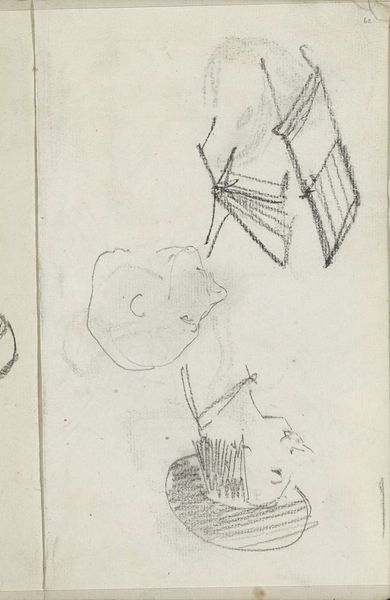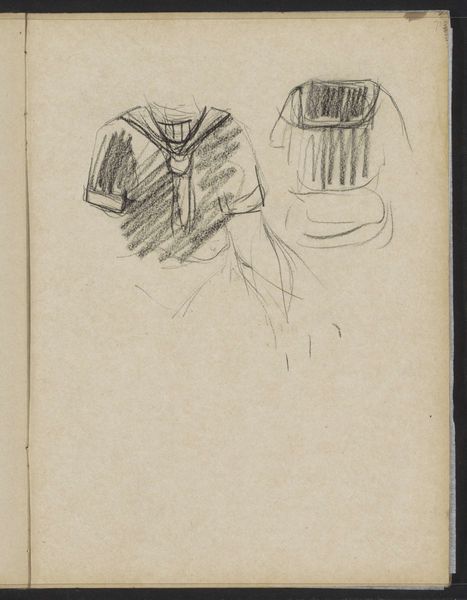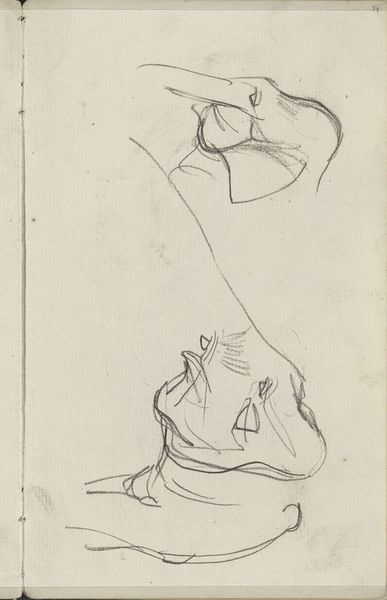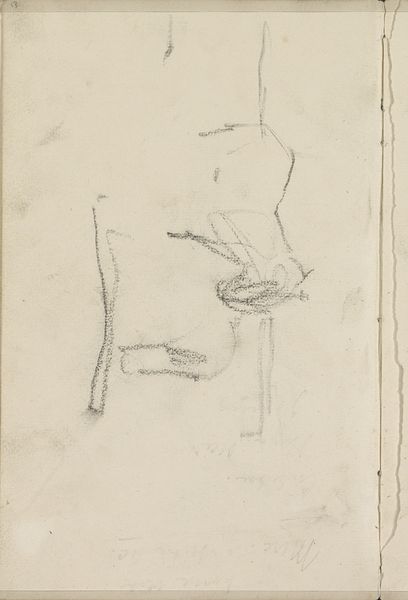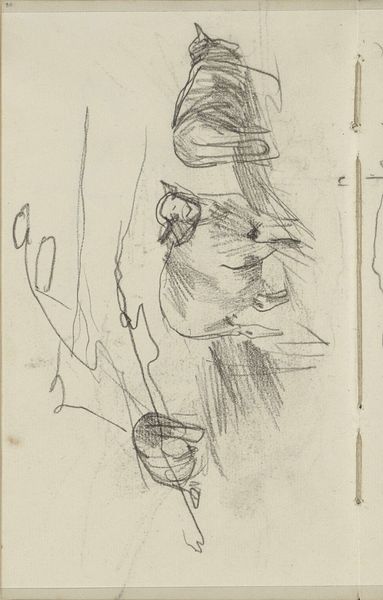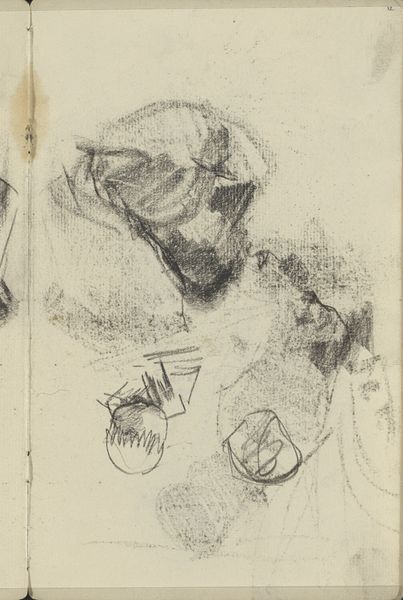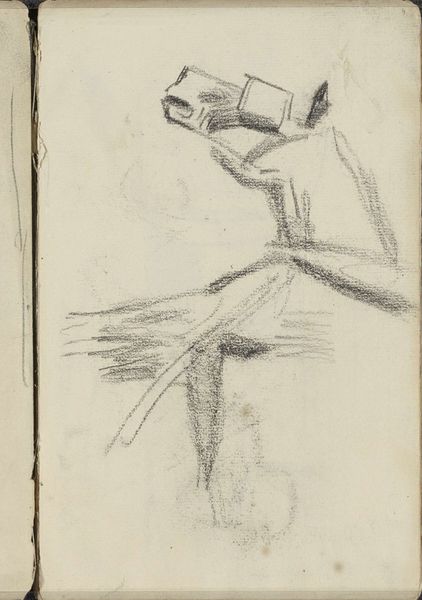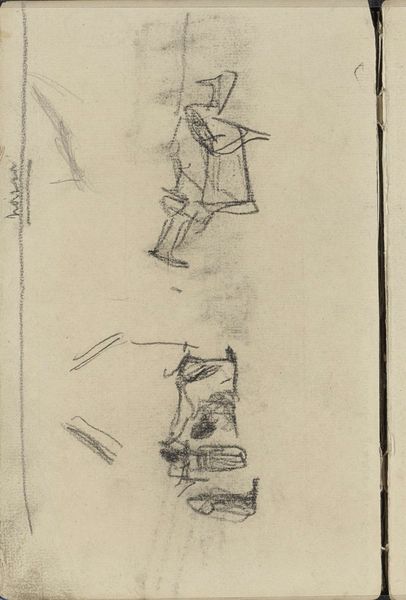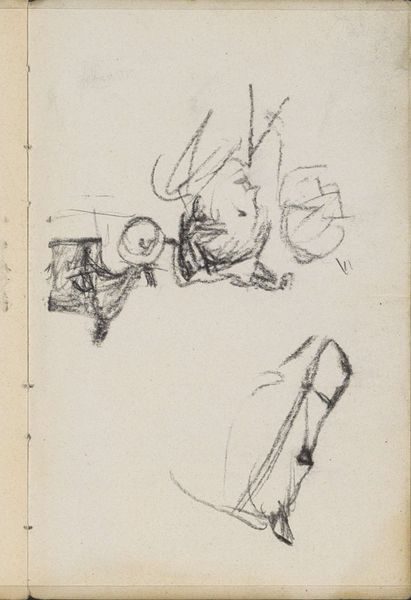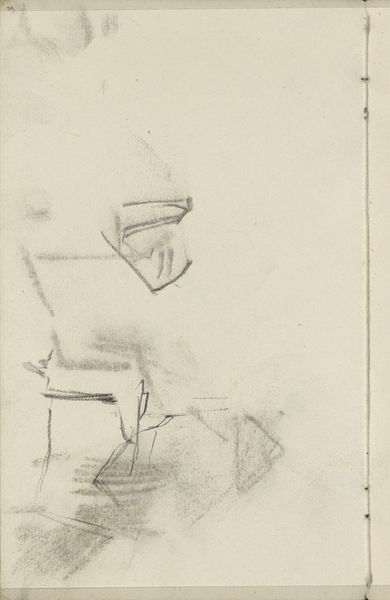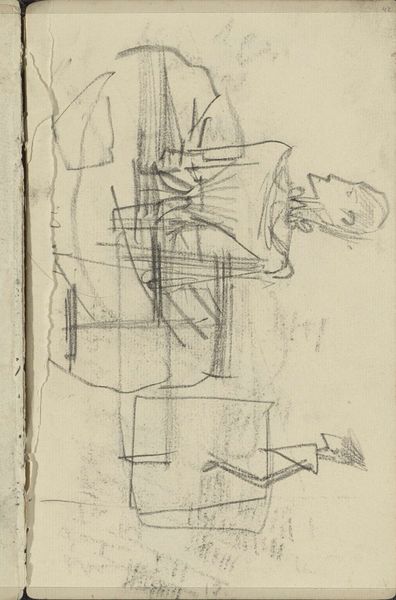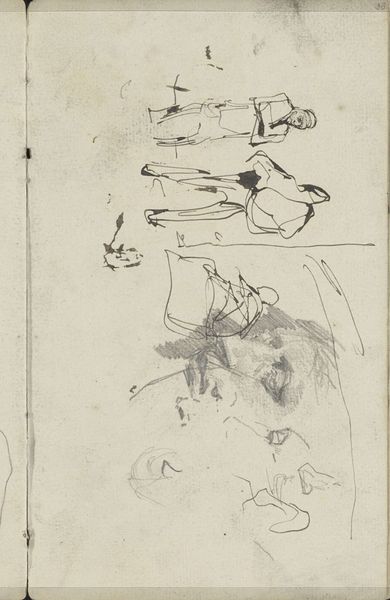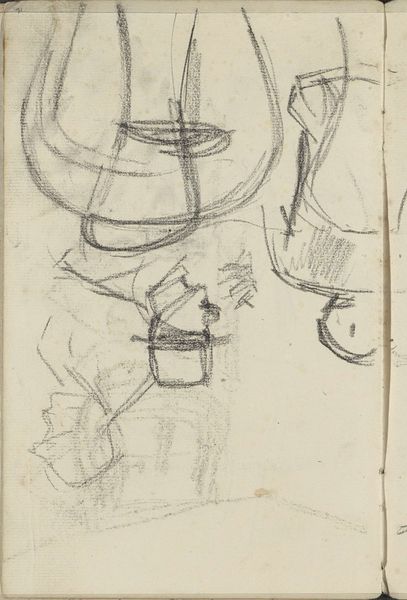
drawing, paper, pencil
#
portrait
#
drawing
#
impressionism
#
paper
#
pencil
Copyright: Rijks Museum: Open Domain
Curator: Looking at this evocative sketch, I immediately feel a sense of quiet observation. The soft pencil strokes suggest a fleeting moment, capturing the essence of the subject without imposing rigid definition. What are your thoughts? Editor: Before us is "Vrouw met hoed," or "Woman with Hat," a pencil drawing on paper created around 1882 by George Hendrik Breitner, now housed in the Rijksmuseum. It invites consideration into how visual symbols can function across time. The hat itself speaks volumes. Curator: Absolutely, the hat as a symbol of status and femininity is a starting point, but I also think we need to consider the specific social and political context of the late 19th century in Amsterdam. How might this woman's social standing influence her agency? The angle feels so transient and quickly captured; to me, it communicates a sense of modern urban life at that moment in history. Editor: It is so minimal, isn't it? And yet that rapid notation lends itself to multiple meanings and associations. Notice the vertical element alongside her portrait — the shading almost invokes the column of a classical sculpture fragment, speaking to ideas of antiquity and enduring aesthetic codes. Curator: Yes, I agree; the visual language employed really pushes the piece to operate across these seemingly contradictory points. What I also find compelling is how the sketch lacks certain details. It's suggestive rather than explicit, which gives it an immediacy, like street photography that brings up broader narratives around class, urban alienation, or the construction of modern feminine identity. How might our contemporary understanding shift through such lens? Editor: Indeed, the lack of detailed rendering allows the viewer to participate, projecting personal experience and memories onto the image, even cultural myths about feminine ideals. One could read into it messages about transience, but even a certain form of cultural expectation regarding representation. I mean, what even defines representation now? Curator: I think exploring the ambiguities in Breitner's work is incredibly pertinent to thinking through how we engage with portraiture now. It is less about celebrating a privileged figure, and more about the act of viewing, of historical awareness. The pencil allows such versatility in terms of shading or clarity, something painting can also deliver but is much more time-intensive, to this effect. Editor: So, this drawing acts almost like an aide-memoire. The object almost embodies memory, and perhaps speaks about both cultural loss and adaptation. Curator: Yes, it pushes me to explore how these objects help challenge the construction of historical narratives by addressing these gaps in information! Editor: For me, considering how those shapes resonate visually and thematically offers fascinating and productive discourse across time. It is about both the real and perceived.
Comments
No comments
Be the first to comment and join the conversation on the ultimate creative platform.
